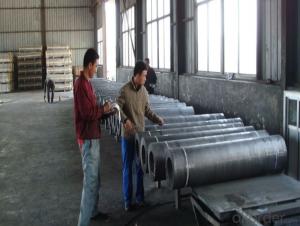When we talk about the backbone of the steel industry, graphite electrodes come to mind. These cylindrical wonders are the unsung heroes that play a pivotal role in the production of steel. So, let’s dive into the world of graphite electrodes and explore the dynamics of their demand and supply in the ever-evolving steel industry.
First off, graphite electrodes are made from pure graphite, which is a form of carbon. They are used in electric arc furnaces (EAFs) to melt scrap metal and transform it into new steel. The process is pretty straightforward: the electrodes emit an electric current that generates an arc, heating the furnace and melting the scrap metal. It’s a fascinating process, and it’s where the demand for graphite electrodes kicks in.
Now, let’s talk about the demand side of the equation. The demand for graphite electrodes is directly linked to the production of steel. As the global economy grows and the need for steel increases, so does the demand for these graphite wonders. The construction sector, automotive industry, and infrastructure development are just a few areas where steel is in high demand, and consequently, so are graphite electrodes.
But it’s not just about the quantity; the quality of graphite electrodes is equally important. High-quality electrodes can improve the efficiency of the steel production process, reduce energy consumption, and lower emissions. This is where the research and development in the graphite electrode industry come into play, with companies constantly striving to improve the performance and lifespan of their products.
On the supply side, the production of graphite electrodes involves several steps, including calcination, impregnation, and baking. These processes require specialized equipment and skilled labor, which can be a challenge for some manufacturers. Additionally, the raw materials needed for the production of graphite electrodes, such as petroleum coke and needle coke, are subject to market fluctuations that can impact the supply chain.
One of the key factors affecting the supply of graphite electrodes is the availability of raw materials. The quality and price of these materials can have a significant impact on the production costs and, ultimately, the supply of electrodes to the market. To ensure a stable supply, companies must maintain strong relationships with their suppliers and invest in alternative sources of raw materials when necessary.
Another aspect to consider is the environmental impact of graphite electrode production. The industry is under increasing pressure to adopt more sustainable practices and reduce its carbon footprint. This includes investing in cleaner production methods, recycling waste materials, and minimizing emissions. By doing so, companies can not only improve their environmental performance but also enhance their reputation and attract more customers.
The global market for graphite electrodes is highly competitive, with players from China, India, Russia, and other countries vying for market share. To stay ahead of the competition, companies must focus on innovation, quality, and customer service. This includes developing new products that cater to the specific needs of the steel industry, ensuring consistent quality in their products, and providing excellent after-sales support to their customers.
In conclusion, the demand and supply of graphite electrodes in the steel industry is a complex and ever-changing landscape. It’s driven by the global economy, the need for steel in various sectors, and the constant pursuit of innovation and sustainability. As the world continues to evolve and the demand for steel grows, the graphite electrode industry must adapt and thrive to meet these challenges head-on. So, the next time you see a steel structure, remember the humble graphite electrode that played a part in its creation.

